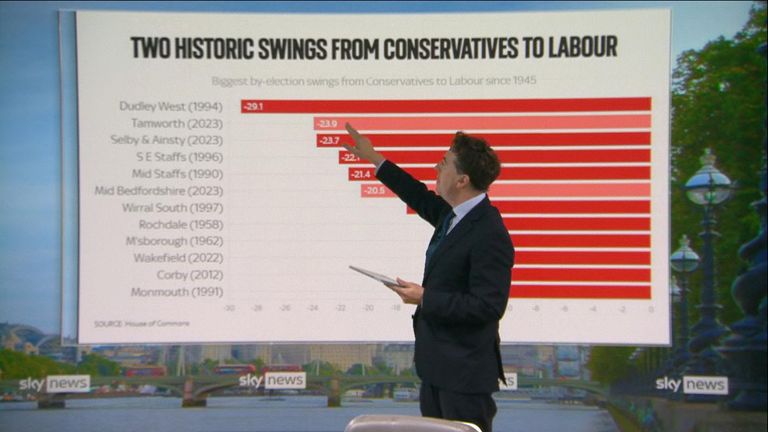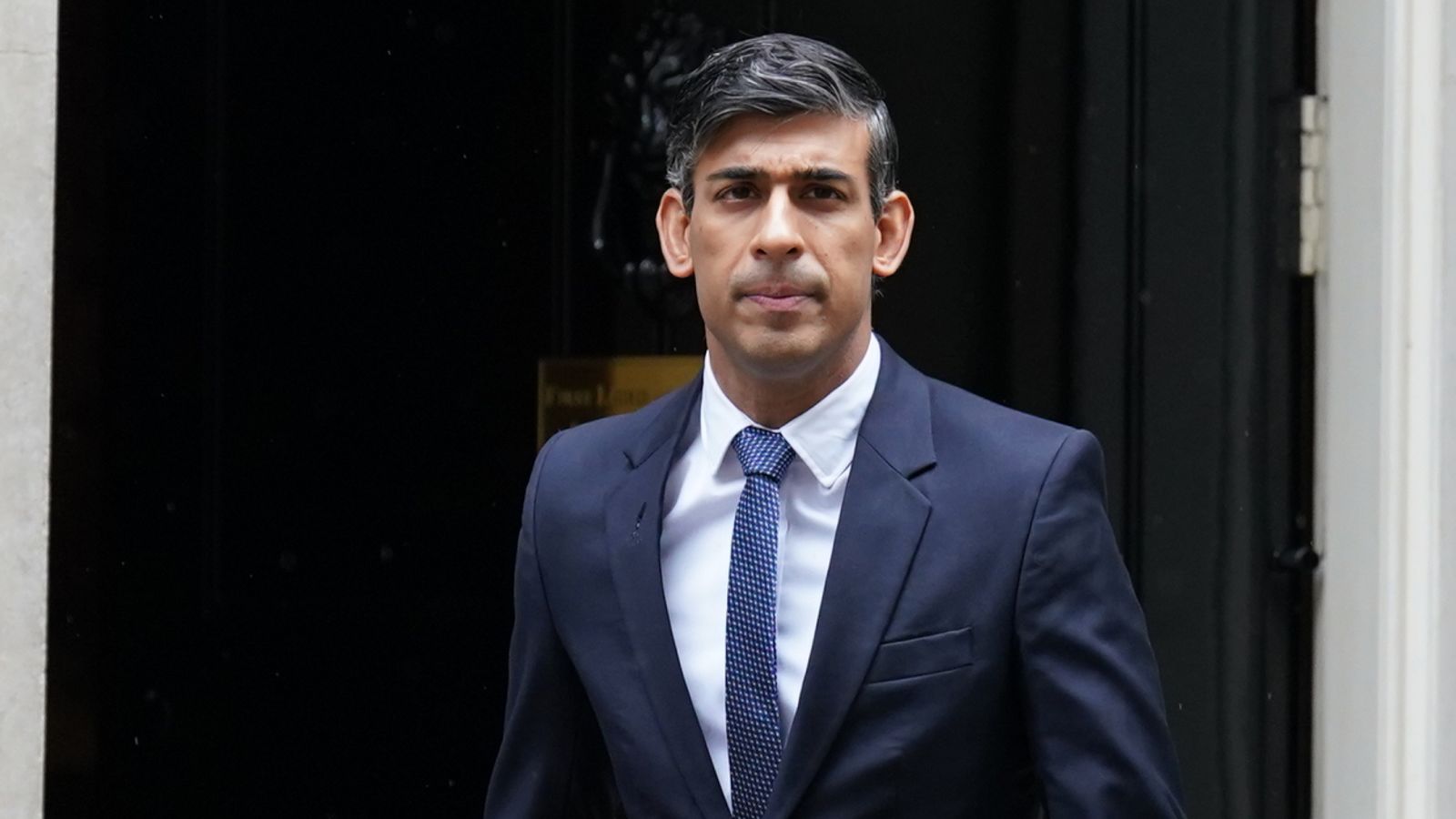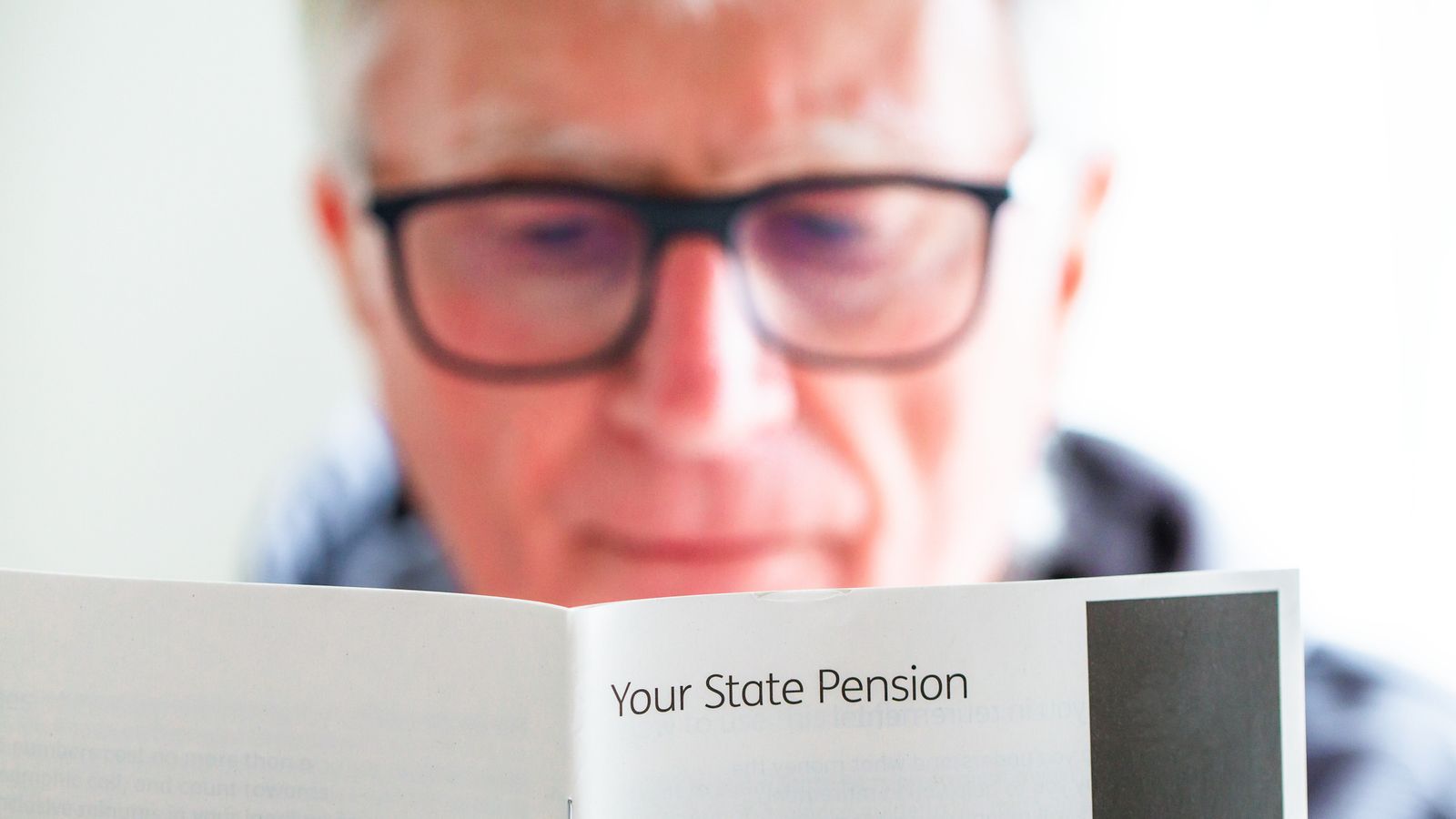
A surprise double by-election win for Labour that overturns records, sees two of the safest Tory seats in the country turn red and cut the Tory vote cut in half. Whatever Conservative ministers say, this matters.
The Tamworth by-election defeat is the second biggest Tory to Labour swing since 1945, and setting a record by overturning the 66% Tory majority at the last election. To put it another way, no governing party has lost a seat as safe as Tamworth.
Mid Bedfordshire, which some Tories hoped would remain in their hands at the start of the evening, went red because of – rather than in spite of – the Liberal Democrats.
Follow live: Terrible night for Tories as Starmer says Labour is ‘redrawing the political map’
What could have been a low point for tactical voting ended with Lib Dems claiming partial credit for Labour taking control of Nadine Dorries’s seat, to the gnashing of Labour teeth.
While true that by-elections are no automatic proxy for general elections, hearing a parade of Tory frontbenchers hiding behind this epithet doesn’t hide the fact that these results point to a comprehensive defeat for their party.
If the 20 percentage point swings to Labour seen in four recent by-elections were repeated in a national poll next year – admittedly imperfect but nevertheless useful proxy – that would mean a comfortable Labour majority for Sir Keir Starmer.
Tory MPs with 10,000 and 15,000 majorities – which would usually be considered safe – now will be worrying whether they have a sufficient buffer to withstand any Labour tidal wave. Jitters divide parties at a time when they need to be united.
Yet the message from the government is that the response to this by-election to carry on with the existing plan.
Maria Caufield, a Tory frontbencher, suggested that Rishi Sunak should be credited for having previously already shown an appetite for change – albeit that was revealed at a chaotic Tory conference and appears to have failed to move the dial with voters in this by-election.
She also played down the big Tory to Labour swings as “statistical”. It is true the number of Labour votes received in Mid Beds was down a fraction on the 2019 general election – a point clung on to by a succession of Conservative MPs – this argument ignores that the Conservative vote was a quarter of what it was.
There is no easy way for the Tories to spin their way out of this beyond the opening bluster.
It is true the number of Labour votes received in Mid Beds was down a fraction on the 2019 general election – a point clung on to by a succession of – this argument ignores that the Conservative vote was a quarter of what it was. There is no easy way for the Tories to spin their way out of this beyond the opening bluster.
Meanwhile Andrew Bowie, a Scottish minister, said that while it’s important to listen “what is clear is that they do agree with our priorities” and “support what we are doing” but “they are not prepared to vote for us at the moment”.
When asked if he thought the Tories were doing everything right, he replied: “Obviously there’s always room for improvement but we are absolutely determined we are on the right course.”
This suggests a government that speaks the language of listening without any intention of action.
Perhaps it is too difficult for the Tories to upend the plan at this point.
Mr Sunak has already done one reset this autumn – changing policies, cabinet members and the team in Number 10 and so far there is little sign it is paying off.
There are enough things already on the agenda to have to cope with: the plan is coming together for next month’s King’s Speech with legislation which has little parliamentary time to pass, followed by an autumn statement which may unveil a mega fiscal black hole.
The final roll of the dice is a possible reshuffle later in the year if Sunak thinks he is stronger than he was at the start of September.
This is enough change on the cards; inside Number 10 they likely do not think there is much need for any further revolution.
The question is how the wider Conservative movement now responds to the dreadful response.
The party conference in September suggested a membership already looking around for alternatives, and some MPs wanting to show they’re listening.
Will this mean restless Tory MPs, pushing for yet more bolder, more distinctive policies – often ideas that appease factions on the right of the party?
Or will it mean a rush for the exit in the new year – more Tory MPs sniffing the wind and deciding not to stand again?
Mr Sunak will try and shrug off wider discontent, but the question is whether he’s strong enough to do this successfully.
The unwelcome message the results send will be heard far and wide across the Conservative movement, meaning it is hard to predict what will happen next.













